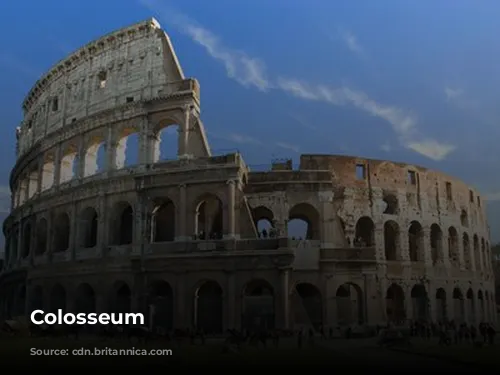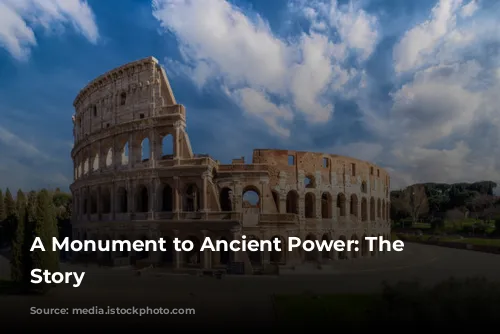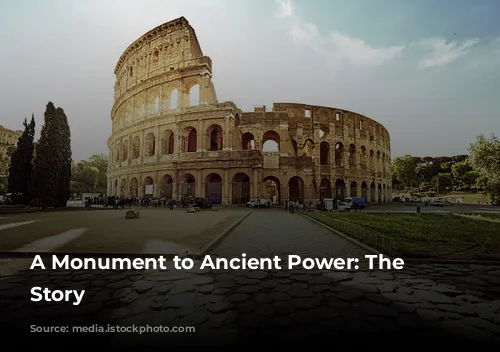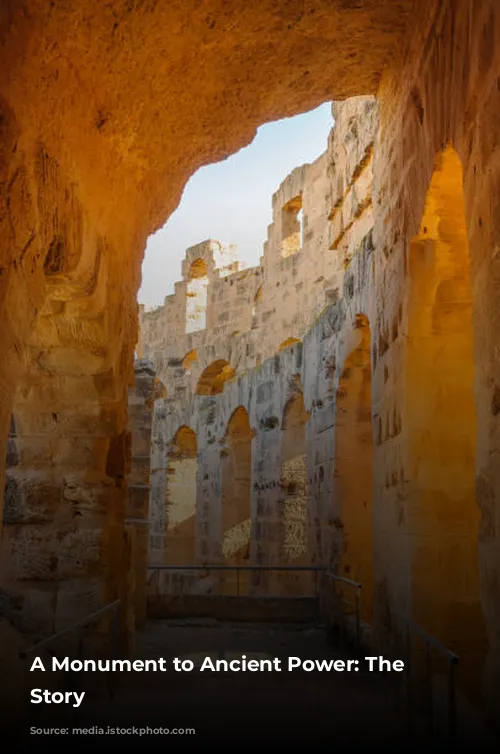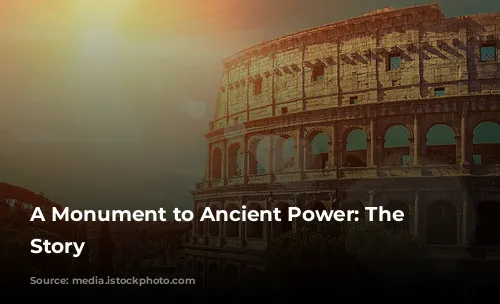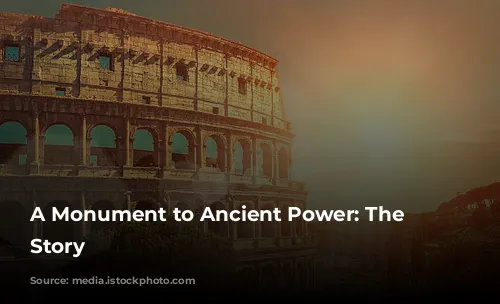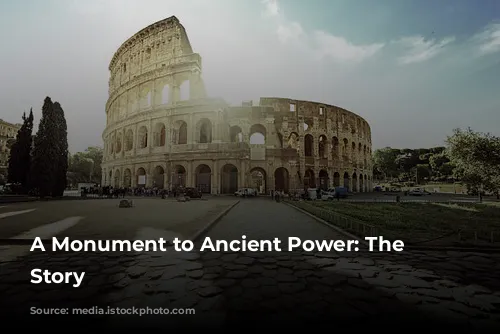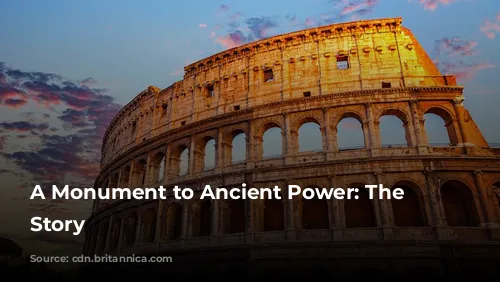The Colosseum, a towering architectural marvel from the Roman Empire, stands as a testament to ancient Rome’s remarkable engineering skills. More than just a relic of the past, it’s a thriving tourist attraction, drawing millions of visitors each year and generating substantial revenue for the Italian government.
In 2018, the Colosseum, Roman Forum, and Palatine Hill together attracted a staggering number of tourists, generating over $63.3 million (€53.8 million), making it the most lucrative tourist destination in Italy. This remarkable feat highlights the enduring allure of Rome’s ancient wonders, captivating travelers from across the globe.
From Arena to Quarry: The Colosseum’s Decline and Rebirth
The Colosseum’s grandeur, however, wasn’t always preserved. Following the decline of the Western Roman Empire, the Colosseum fell into a state of disrepair. In the 12th century, it was repurposed by the Frangipane and Annibaldi families as a fortified stronghold. Later, in the late 15th century, Pope Alexander VI shockingly allowed the Colosseum to be used as a stone quarry, stripping away its ornate marble embellishments. This period of neglect, spanning over a thousand years, tragically stripped the Colosseum of its former glory.
Fortunately, the Colosseum was not abandoned to its fate. In the 1990s, state-funded restoration efforts were launched, bringing the Colosseum back from the brink of ruin. These vital projects aimed to restore the Colosseum to its former splendor, safeguarding this architectural masterpiece for generations to come.
A Colosseum Built on Conquest and Entertainment
The construction of the Colosseum was driven by the desire to rejuvenate Rome, following the tumultuous year of the four emperors in 69 CE. Emperor Vespasian, a man who rose to power through adversity, envisioned the Colosseum as a symbol of Roman might and a testament to his rule. He intended it to be a spectacle of entertainment, a place where Romans could witness gladiatorial contests, animal hunts, and even staged naval battles. This grand vision was intended to distract the Roman people and consolidate Vespasian’s power.
The Colosseum was built between 70 and 72 CE under the watchful eye of Emperor Vespasian. Its completion was celebrated in 80 CE by his successor, Titus, with 100 days of lavish festivities. The final touches, including the addition of the fourth story, were added by Emperor Domitian in 82 CE. It’s important to note that the Colosseum’s construction was financed by the plunder taken from Titus’s conquest of Jerusalem in 70 CE, a tragic reminder of the brutality and exploitation that fueled the Empire’s growth. Moreover, the Colosseum’s very foundation was built by enslaved Jews from Judea, a stark testament to the Empire’s oppressive system.
An Architectural Masterpiece: The Colosseum’s Design and Construction
The Colosseum, also known as the Flavian Amphitheatre, is an elliptical structure constructed of stone, concrete, and tuff. It rises to an impressive height of four stories, spanning a vast area of 620 by 513 feet (189 by 156 meters). This colossal amphitheater could accommodate an astounding 50,000 spectators, offering a glimpse into the scale of Roman entertainment.
The Colosseum’s construction was a testament to Roman engineering ingenuity. Unlike earlier amphitheatres, which were often built into natural hillsides for support, the Colosseum stands independently, supported by a complex system of barrel and groin vaults. Its imposing facade is adorned with engaged columns, showcasing the architectural styles of the Doric, Ionic, and Corinthian orders. The Colosseum’s construction employed materials like travertine for the main structure and volcanic tufa for the secondary walls, while concrete formed the inner bowl and arcade vaults.
A Stage for Spectacle: The Colosseum’s Activities and Legacy
The Colosseum was a venue for a multitude of thrilling spectacles. Spectators were shielded from the sun by a massive retractable awning known as a velarium. This impressive feat of engineering required the skill of hundreds of Roman sailors to operate the intricate rigging. The Colosseum witnessed countless gladiatorial combats, man vs. beast encounters, and even elaborate mock naval battles. The arena’s grandeur and the spectacles it hosted captivated the hearts and minds of the Roman populace.
However, it’s worth noting that the Colosseum’s history is also tinged with controversy. The arena’s construction was funded by the spoils of conquest and fueled by the labor of enslaved people, reflecting the Empire’s brutal system. Additionally, while historical records are debated, the Colosseum may have been the site of early Christian martyrdom, adding another layer of complexity to its legacy.
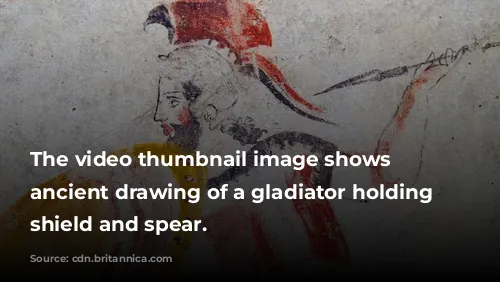
From Ruins to Icon: The Colosseum’s Enduring Presence
The Colosseum has experienced a long and turbulent history. After the fall of the Roman Empire, it was used as a church, then a fortress, and ultimately a quarry. Sadly, this period of neglect stripped the Colosseum of its marble seats and decorative elements. Thankfully, the 19th century saw the start of preservation efforts, with significant contributions from Pope Pius VIII. Further restoration projects, notably in the 1990s, have helped to restore the Colosseum to its former grandeur.
Today, the Colosseum stands as a beacon of Rome’s rich history and a testament to its architectural ingenuity. This remarkable structure attracts millions of visitors each year, captivated by its grand scale and the stories it holds. The Colosseum continues to play a significant role in Roman life, hosting changing exhibitions that delve into the culture and history of ancient Rome. This enduring symbol of Roman power stands as a reminder of the empire’s grandeur, its legacy, and the enduring allure of its past.

